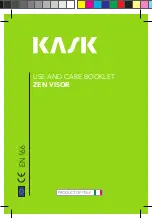
Mounting and Commissioning
3.3 Commissioning
SIPROTEC, 7SD5, Manual
C53000-G1176-C169-5, Release date 02.2011
560
For
Teleprot. Dist.
in address
121
Pilot wire comp
must be configured and the
FCT Telep. Dis.
must be switched under address
2101
ON
. The protection relays at both line ends must be operating. First, the
quiescent current loop of the pilot wire comparison is not supplied with auxiliary voltage.
A fault is simulated outside of zone Z1, but within zone Z1B. Since stage Z1B is blocked, the distance protection
is only tripped in a higher-leveled zone (usually with T2). This check must be carried out at both line ends.
The direct voltage for the quiescent current loop of the pilot wire comparison is switched to the line. The loop
is then fed with quiescent current.
At one line end a fault is simulated outside the first zone, but within overreach zone Z1B. The command is
tripped to T1B. This check must be carried out at both line ends.
Since the quiescent current loop is part of the nature of the pilot wire comparison, these tests also check if the
transmission process is performed correctly. All other tests which are described in this Section can be passed
over. However, please observe the last margin heading „Important for All Schemes“!
Checking of Reverse Interlocking
The checking of the reverse interlocking is described below. If a different transmission scheme is applied, this
part can be skipped.
For more detailed information about the reverse interlocking see Section 2.7.
For
Teleprot. Dist.
in address
121
Rev. Interlock
must be configured and the
FCT Telep. Dis.
at address
2101
must be switched
ON
. The distance protection of the infeed and protection devices of all out-
going feeders must operate. At the beginning no auxiliary voltage is fed to the line for the reverse interlocking.
The following paragraphs describe the testing in a blocked state, i.e. the pickup signals of the outgoing devices
are connected in parallel and block the tested device of the infeed. In case of release (the NC contacts of the
outgoing devices are connected in series) the tests have to be reinterpreted respectively.
A fault is simulated within zone Z1 and overreaching zone Z1B. As a result of the missing blocking signal, the
distance protection trips after time delay T1B (slightly delayed).
The direct voltage for reverse interlocking is now switched to the line. The precedent test is repeated, the result
will be the same.
At each of the protection devices of the outgoing circuits, a pickup is simulated. Meanwhile, another short-circuit
is simulated as described before for the distance protection of the infeed. Now, the distance protection trips
after time T1, which has a longer setting.
These tests also check the proper functioning of the transmission path. All other tests which are described in
this Section can be passed over. However, please observe the last margin heading „Important for all schemes“!
Checking for permissive release
Requirements:
Teleprot. Dist.
is configured in address
121
to one of the comparison schemes using per-
missive signal, i.e.
POTT
or
Dir.Comp.Pickup
or
UNBLOCKING
. Furthermore, at address
2101
FCT Telep.
Dis.
ON
is switched. The corresponding send and receive signals must be assigned to the corresponding
binary output and input. For the echo function, the echo signal must be separately assigned to the transmit
output!
Detailed information on the permissive scheme function is available in Section 2.7.
A simple check of the signal transmission path from one line end is possible via the echo function if these per-
missive schemes are used. The echo function must be activated at both line ends, i.e. address
2501
FCT Weak
Infeed
=
ECHO only
; with the setting
ECHO and TRIP
a trip command may result at the remote end of the
check!
















































